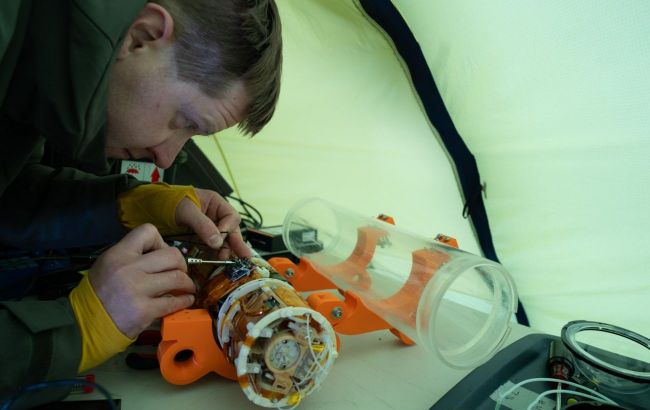NASA testing snake-like robot to search for life in icy oceans of Saturn's moon
 Photo: NASA Jet Propulsion Laboratory's snake robot (NASA/JPL-Caltech)
Photo: NASA Jet Propulsion Laboratory's snake robot (NASA/JPL-Caltech)
The scientific research center of NASA demonstrated a snake-like robot that can search for life in the icy oceans of Saturn's moon, inaccessible places on the Moon, or even be used on Earth. Here's what is known about this robot and how it differs from others.
The following sources were used in preparing the material: Jet Propulsion Laboratory, NASA.
What you need to know about the snake robot
The Jet Propulsion Laboratory (JPL) is a NASA scientific research center that, among other things, develops robotic solutions for the exploration of extraterrestrial life.
One of their projects is the Exobiology Extant Life Surveyor (EELS) - a snake-like robot weighing about 100 kilograms and measuring 4.4 meters in length.
Although the product design is not unique, this development has several significant advantages.
 The robot on ice (photo: NASA/JPL-Caltech)
The robot on ice (photo: NASA/JPL-Caltech)
EELS is an autonomous robot
It can visit previously unseen places without human involvement and in real time.
"Robot was inspired by a desire to look for signs of life in the ocean hiding below the icy crust of Saturn’s moon Enceladus by descending narrow vents in the surface that spew geysers into space," explained JPL.
 Research robot (photo: NASA/JPL-Caltech)
Research robot (photo: NASA/JPL-Caltech)
EELS creates 3D map of the environment
The "head" of this snake-like robot can see and interpret the world using a special laser locator (lidar) and four pairs of stereo cameras.
 The smart "head" of the robot transmits data to scientists (photo: NASA/JPL-Caltech)
The smart "head" of the robot transmits data to scientists (photo: NASA/JPL-Caltech)
EELS has high maneuverability
The movement of this robot somewhat mimics the active skin locomotion of a snake - screws with independent drives rotate opposite each other.
This provides movement, traction, and grip on icy terrain, as well as on uneven surfaces resembling snow or sand.

Testing EELS on various surfaces (photo: NASA/JPL-Caltech)

Testing EELS on various surfaces (photo: NASA/JPL-Caltech)

Testing EELS on various surfaces (photo: NASA/JPL-Caltech)
EELS is mobile and flexible
According to the developers, this robot has many degrees of freedom. It can adopt several different configurations in real time to adapt to various environments.
 The robot on sand (photo: NASA/JPL-Caltech)
The robot on sand (photo: NASA/JPL-Caltech)
EELS is a smart assistant
The robot's software is designed for autonomous and aware operation - so it can assess risks and choose the best path in uncertain terrain, protecting itself from unnecessary dangers.

Currently, the robot is on a leash (photo: NASA/JPL-Caltech)
Read also how to become a NASA astronaut for training and landing on Mars and earn $152,000.

